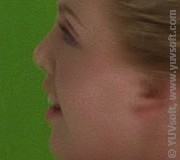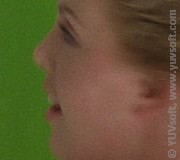Grain-Degrain
Short Description
Download:
- Booklet, PDF (834 KB)
- Video for managers (short), WMV (6.67 MB)
- Video for developers (with technical details), WMV (6.79 MB)
Video that is digitized from film has a peculiar noise known as a “film grain noise.” This type of noise makes digital video considerably less compressible and may hurt subjective video quality (some viewers prefer film grain noise; others do not). On the other hand, artificial or reconstructed film grain noise can make compression artifacts less noticeable and make the video livelier, and it can improve the visual quality. Recently, considerable attention has been paid to film grain noise removal (degrain) and reconstruction (regrain); degrain and regrain features are currently included in the H.264 video coding specification.
Primary Applications
- DVD and HD DVD recorders
- Video CD/DVD/DivX players
- Digital camcorders
- Television equipment
- Stream pre-processing for better quality/compression ratio trade-off after encoding by either lossy or lossless video codecs
- Professional video remastering
- Home video processing
Key Features
- One-pass real-time processing
- Several methods, with various trade-offs, for grain noise removal
- Several approaches to grain reconstruction (generation) including analytical models and a film grain samples database method
- Application of grain noise patterns extracted from any video
- Applicable both to video and to static images
- Suitable for hardware implementation
Basic Deliverables
- Source code for a reference implementation in C
- C and assembly language source code for an implementation optimized for the PC (if required)
- Algorithm description
- Software description
- Verification instructions
Contact Information
For information on licensing, please contact our sales staff.




 Follow
Follow